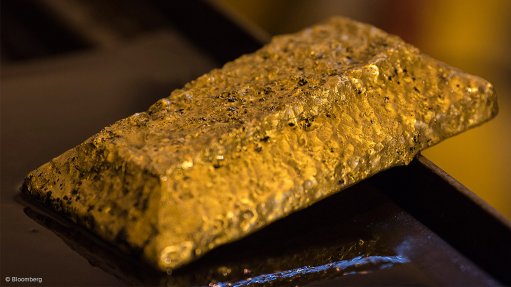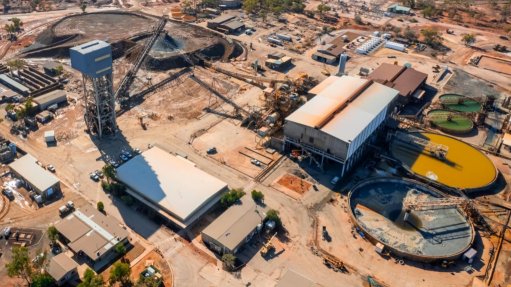MeerKAT telescope participates in birth of new era of astronomy
South Africa’s MeerKAT radio telescope array, although still under construction, has successfully participated in an unprecedented international collaboration that has opened a new era in astronomy. For the first time, a major astronomical event – the collision of two neutron stars – has been observed in the electromagnetic spectrum and by gravity waves.
The US Laser Interferometer Gravitational Wave Observatory (Ligo), which is composed of two sets of detectors, at Hanford, in Washington state, and at Livingston, Louisiana, detected a gravitational wave source (designated GW170817) on August 17. Almost immediately afterwards, the same wave was detected by the six-country European collaborative Virgo gravity wave observatory, near Pisa, in Tuscany, Italy, and then, about two seconds later, the US National Aeronautics and Space Administration’s Fermi space telescope detected a gamma ray burst from the same area.
The observations by these gravity wave detectors on two continents, followed by the observation of the gamma ray burst by the space telescope, allowed a triangulation of the source. This, in turn, permitted follow-up observations by some 70 optical, infrared, ultraviolet, radio, and X-ray telescopes, on both the earth and in space.
One of the radio astronomy instruments involved was MeerKAT, which observed the event on three days during the period August 26 to September 17. But it was also observed by the Southern African Large (optical) Telescope and the Hartebeesthoek Radio Astronomy Observatory (HartRAO) – MeerKAT and HartRAO both form part of the recently established South African Radio Astronomy Observatory (Sarao). “[T]he initial observations we’re making of GW170817 indicate that we’re already contributing meaningfully in this area – in other words, even as we’re still building it, MeerKAT has started to do science,” highlighted Sarao chief scientist Dr Fernando Camilo.
“The Ligo-Virgo gravitational wave detection and subsequent electromagnetic study of the binary neutron star collision are one of the many truly wondrous moments of modern astrophysics,” he affirmed. “Many of us have dreamt about this event for decades, and it’s more wonderful than we could have imagined. It raises as many questions as it begins to answer.
“Deep understanding in this area will come from continued study of the electromagnetic radiation from the remnant of GW170817, which we expect to evolve over weeks and months, and from the detailed study of more such events to follow in the years to come,” he pointed out. “Currently, the radio waves from this source are too faint for the partially built MeerKAT to detect, but our sensitivity at the radio frequency we use is already among the best in the world, and our scientists and engineers in South Africa are working hard on making it even better.”
The collision took place relatively close to earth, in astronomical terms – at a distance of 130-million light years. (Our galaxy, the Milky Way, has a diameter of about 100 000 light years). The two neutron stars spiralled into each other. Each had a mass estimated at between 1.1 to 1.6 times the mass of the sun.
Neutron stars are the smallest and most dense stars known. Each is only about 20 km in diameter, but a neutron star is so dense that a teaspoonful of its matter would have a mass of a billion (not million) tons. For the last 100 seconds before they collided, the two neutron stars emitted gravitational waves that were detected on earth and when they smashed into each other, they emitted a burst of gamma rays. Other forms of electromagnetic radiation, including visible light, were also released and detected in the following days and weeks.
“This detection opens the window of a long-awaited ‘multimessenger’ astronomy,” highlighted Ligo Laboratory executive director David H Reitze. “It’s the first time we’ve observed a cataclysmic astrophysical event in both gravitational waves and electromagnetic waves – our cosmic messengers.”
Article Enquiry
Email Article
Save Article
Feedback
To advertise email advertising@creamermedia.co.za or click here
Press Office
Announcements
What's On
Subscribe to improve your user experience...
Option 1 (equivalent of R125 a month):
Receive a weekly copy of Creamer Media's Engineering News & Mining Weekly magazine
(print copy for those in South Africa and e-magazine for those outside of South Africa)
Receive daily email newsletters
Access to full search results
Access archive of magazine back copies
Access to Projects in Progress
Access to ONE Research Report of your choice in PDF format
Option 2 (equivalent of R375 a month):
All benefits from Option 1
PLUS
Access to Creamer Media's Research Channel Africa for ALL Research Reports, in PDF format, on various industrial and mining sectors
including Electricity; Water; Energy Transition; Hydrogen; Roads, Rail and Ports; Coal; Gold; Platinum; Battery Metals; etc.
Already a subscriber?
Forgotten your password?
Receive weekly copy of Creamer Media's Engineering News & Mining Weekly magazine (print copy for those in South Africa and e-magazine for those outside of South Africa)
➕
Recieve daily email newsletters
➕
Access to full search results
➕
Access archive of magazine back copies
➕
Access to Projects in Progress
➕
Access to ONE Research Report of your choice in PDF format
RESEARCH CHANNEL AFRICA
R4500 (equivalent of R375 a month)
SUBSCRIBEAll benefits from Option 1
➕
Access to Creamer Media's Research Channel Africa for ALL Research Reports on various industrial and mining sectors, in PDF format, including on:
Electricity
➕
Water
➕
Energy Transition
➕
Hydrogen
➕
Roads, Rail and Ports
➕
Coal
➕
Gold
➕
Platinum
➕
Battery Metals
➕
etc.
Receive all benefits from Option 1 or Option 2 delivered to numerous people at your company
➕
Multiple User names and Passwords for simultaneous log-ins
➕
Intranet integration access to all in your organisation


















